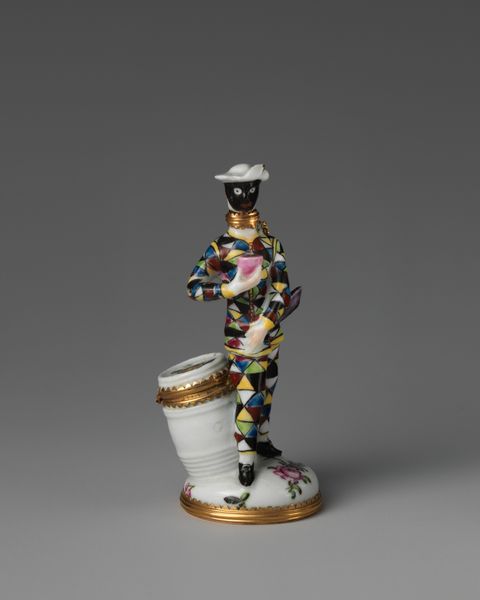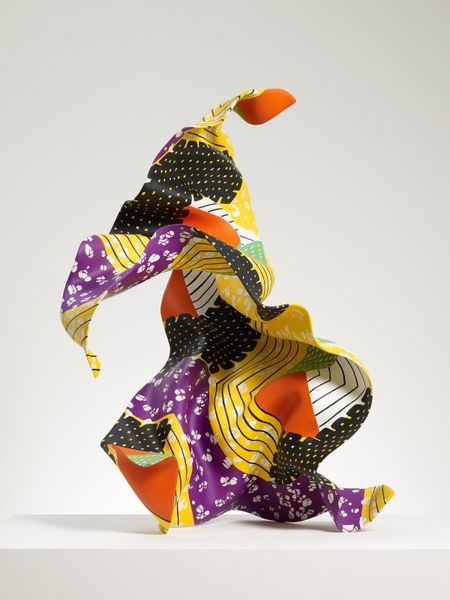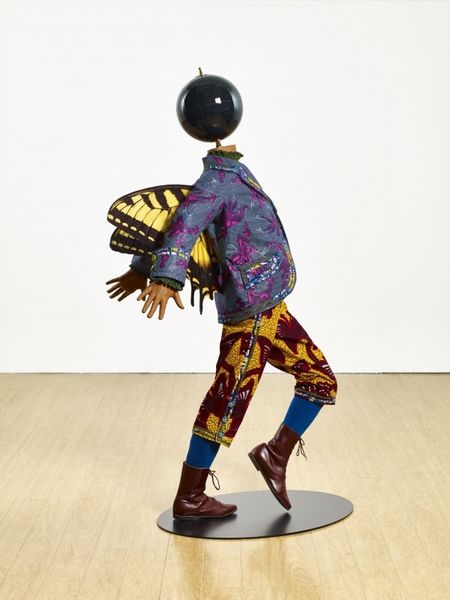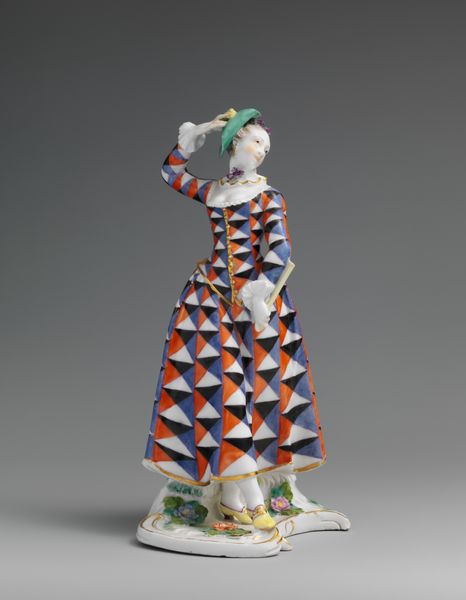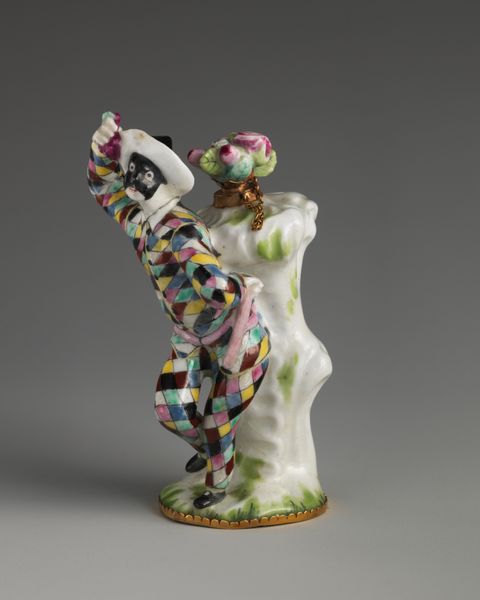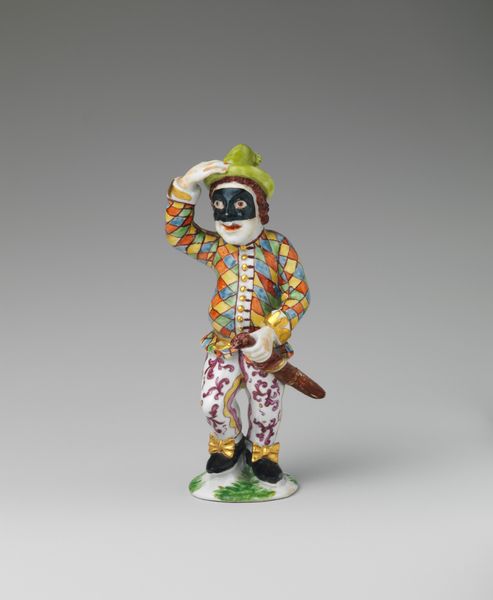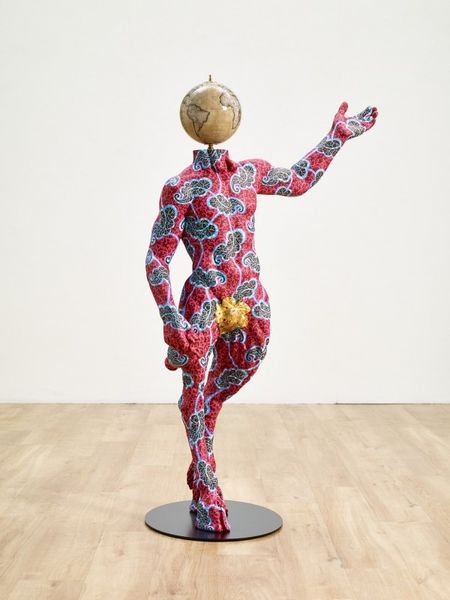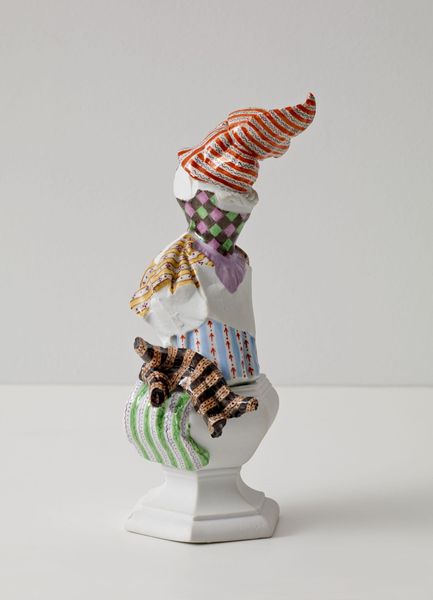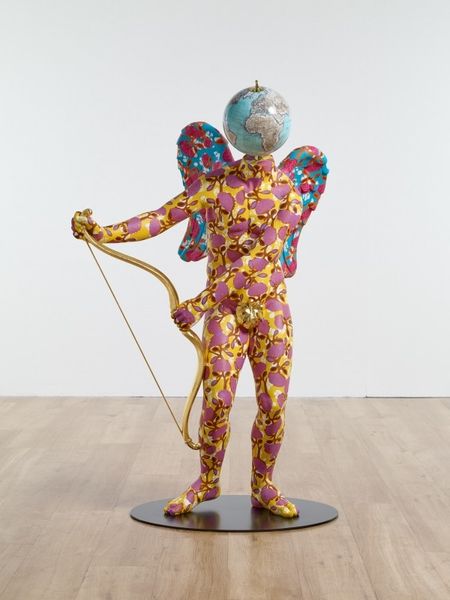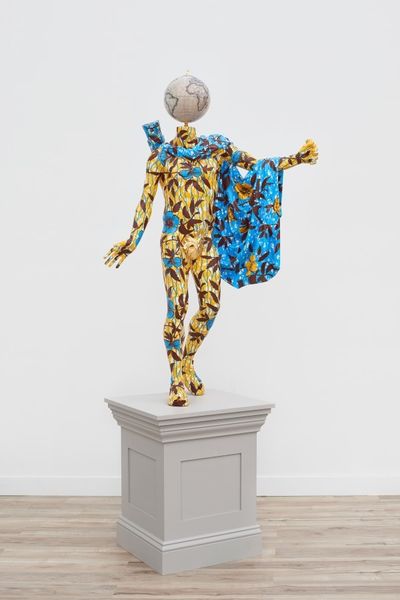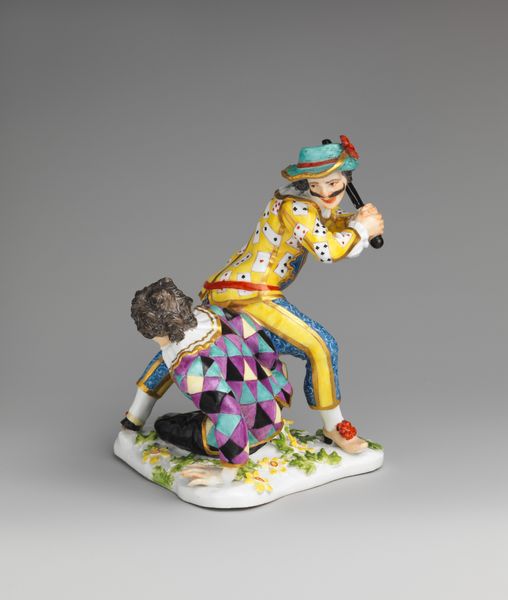
ceramic, porcelain, sculpture
#
portrait
#
ceramic
#
porcelain
#
figuration
#
sculpture
#
men
#
decorative-art
#
rococo
Dimensions: Overall (confirmed): 6 9/16 x 5 1/8 x 3 in. (16.7 x 13 x 7.6 cm)
Copyright: Public Domain
Curator: Well, isn’t he striking? Here we have “Harlequin with jug,” a porcelain figure crafted between 1735 and 1745 by the Meissen Manufactory. The piece currently resides at the Metropolitan Museum of Art. Editor: Immediately, what strikes me is the… precariousness. He’s perched, mid-motion. Almost defiant, but also utterly trapped in this elaborate costume. It feels like forced gaiety. Curator: I agree there’s a tension there. It's such an interesting piece in terms of movement, caught so expertly by the sculptor. It really highlights the Rococo style: light, elegant, almost playful. A world away from, say, the Baroque severity that came before it. Editor: But who gets to play? And at what cost? The harlequin figure, so often a trickster, a servant, almost mocking authority – here rendered in delicate porcelain by an elite manufactory. There's something unsettling about transforming marginalized figures into mere ornaments for the privileged. Curator: It’s also worth noting the exceptional artistry, especially considering the limitations of porcelain at that time. The firing process alone could be treacherous, and the detail in the harlequin's diamond-patterned costume is simply incredible. To me, it speaks to human mastery over seemingly impossible challenges. Editor: The mastery feels… complicated. Consider the history of Meissen, closely tied to royal power, economic exploitation. And this Harlequin… it's hard to ignore the black mask. A black mask, without the explicit minstrelsy, but carrying that shadow nonetheless. It's all tangled, isn't it? This dance of beauty and violence. Curator: Indeed, it makes me wonder about the individual artist's intention here, the degree of irony they invested into their work. Is he a symbol of rebellion? Decoration? Just an echo of courtly performances? A mirror held up to the upper class? The viewer has so much to add to complete it. Editor: Maybe that's all we can ever do: bring our own stories, our own understandings, to bear on these objects. To let them unsettle us, provoke us, maybe even push us towards a different kind of making. Curator: A good reminder for art and life in general. I will remember that for a while.
Comments
No comments
Be the first to comment and join the conversation on the ultimate creative platform.
